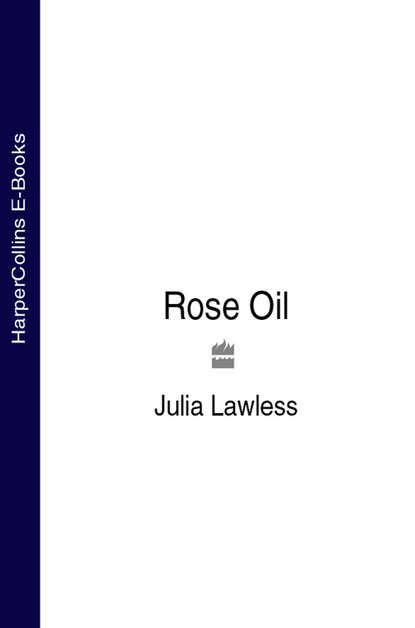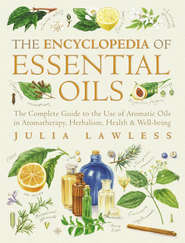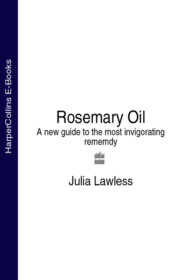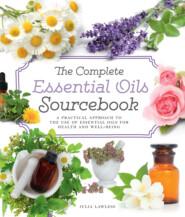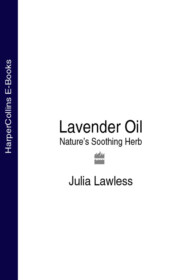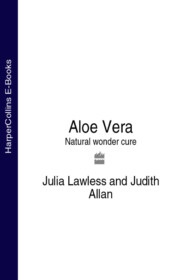По всем вопросам обращайтесь на: info@litportal.ru
(©) 2003-2024.
✖
Rose Oil
Настройки чтения
Размер шрифта
Высота строк
Поля
Rose Oil
Julia Lawless
Often hailed as the 'queen of flowers', the rose has held a prominent place in the mythology of cultures both in the east and west for thousands of years.It is widely recognised as a powerful symbol of sovereignty, love, femininity, beauty and spiritual insight.Today, rose essential oil is as popular as ever, valued highly for both its perfumery and therapeutic uses. Safe, natural and easy to use, this book reveals how it can be used in the home for a multitude of different purposes including:• asthma• cardiac weakness• depression• hangovers• headaches• insomnia• pregnancy• skin care• stress
Copyright (#ulink_0452fc20-338e-5b4b-bf0b-c60900067a13)
Thorsons
An Imprint of HarperCollinsPublishers
77–85 Fulham Palace Road,
Hammersmith, London W6 8JB
www.harpercollins.co.uk (http://www.harpercollins.co.uk/)
Published by Thorsons 1995
Copyright © Julia Lawless 1995
A catalogue record for this book is available from the British Library
Julia Lawless asserts the moral right to be identified as the author of this work
All rights reserved under International and Pan–American Copyright Conventions. By payment of the required fees, you have been granted the nonexclusive, nontransferable right to access and read the text of this e–book on-screen. No part of this text may be reproduced, transmitted, downloaded, decompiled, reverse–engineered, or stored in or introduced into any information storage and retrieval system, in any form or by any means, whether electronic or mechanical, now known or hereinafter invented, without the express written permission of HarperCollins e–books.
HarperCollinsPublishers has made every reasonable effort to ensure that any picture content and written content in this ebook has been included or removed in accordance with the contractual and technological constraints in operation at the time of publication.
Source ISBN 9780722531730
Ebook Edition ©JULY 2014 ISBN: 9780008106188
Version: 2014-08-26
Dedication (#ulink_fefa86e9-ccd6-50ab-a746-8040d0e3e81d)
To ‘Didi’
Contents
Cover (#ud8f827ac-c266-5b04-a035-17557c5c8f28)
Title Page (#u8c7521e9-8b2c-5564-9396-4e11292ff08d)
Copyright (#ulink_1a265360-0e88-5b32-acdc-ec3bed27df20)
Dedication (#ulink_cef900fc-8294-5a7f-8296-1a5d2158a2e4)
Rose Oil – An Introduction (#ulink_fbd442c8-1282-5e74-9b5c-fac40355d905)
Part I: A Medical and Historical Background (#ulink_09baf080-5d44-57ed-b831-c54b6078a42b)
1 Legend, Myth and Symbolism (#ulink_4dac0f92-c3ba-5346-8f3b-6516aafbe8d0)
2 The Traditional Medicinal Uses of the Rose (#ulink_baf8e70a-d44b-5a04-b951-3ab66dbfb4bb)
3 The Rose as a Twentieth-Century Remedy (#ulink_258fc474-73af-58fc-a001-2e5515c46501)
4 Cultivation, Production and Quality Control (#litres_trial_promo)
5 A Summary of the Properties and Applications of Rose Oil (#litres_trial_promo)
6 Methods of Use, Safety Data and Storage Precautions (#litres_trial_promo)
Part II: A – Z of Health and Beauty Applications: (#litres_trial_promo)
acne/blemished skin; (#litres_trial_promo)ageing/mature skin; (#litres_trial_promo)amenorrhoea (absent periods); (#litres_trial_promo)anorexia/loss of appetite; (#litres_trial_promo)anxiety; (#litres_trial_promo)asthma; (#litres_trial_promo)blepharitis; (#litres_trial_promo)bruises; (#litres_trial_promo)children; (#litres_trial_promo)cold sores; (#litres_trial_promo)conjunctivitis/ophthalmia; (#litres_trial_promo)cuts and wounds; (#litres_trial_promo)depression; (#litres_trial_promo)dermatitis and eczema; (#litres_trial_promo)dry/cracked skin; (#litres_trial_promo)dysmenorrhoea (painful periods); (#litres_trial_promo)faintness and dizziness; (#litres_trial_promo)haemorrhoids; (#litres_trial_promo)hangover; (#litres_trial_promo)hay fever; (#litres_trial_promo)headaches; (#litres_trial_promo)heat rash; (#litres_trial_promo)high blood-pressure; (#litres_trial_promo)immune system (to strengthen); (#litres_trial_promo)infectious illness; (#litres_trial_promo)insomnia; (#litres_trial_promo)leucorrhoea and pruritis; (#litres_trial_promo)menopausal problems; (#litres_trial_promo)menorrhagia (heavy periods); (#litres_trial_promo)menstruation problems; (#litres_trial_promo)migraine; (#litres_trial_promo)mouth ulcers; (#litres_trial_promo)palpitations; (#litres_trial_promo)perfume uses; (#litres_trial_promo)perspiration (excessive); (#litres_trial_promo)pregnancy and childbirth; (#litres_trial_promo)premenstrual tension (PMT); (#litres_trial_promo)scars; (#litres_trial_promo)sensitive skin; (#litres_trial_promo)sexual problems; (#litres_trial_promo)skin care; (#litres_trial_promo)stress; (#litres_trial_promo)thread veins; (#litres_trial_promo)varicose veins (#litres_trial_promo)
Keep Reading (#litres_trial_promo)
Appendix A: Different Types of Rose Species (#litres_trial_promo)
Appendix B: Comparative Constituents of Rose Oil (#litres_trial_promo)
References (#litres_trial_promo)
Bibliography (#litres_trial_promo)
Useful Addresses (#litres_trial_promo)
Acknowledgements (#litres_trial_promo)
Other Books By (#litres_trial_promo)
About the Publisher (#litres_trial_promo)
Rose Oil: An Introduction (#ulink_d08016ef-1d30-512b-b9fc-ac05f9fec61a)
Oh, no man knows
Through what wild centuries
Roves back the rose.
Walter de la Mare, All That’s Past
When did the passion for the rose begin? Fossil studies have shown that wild roses were already blooming 40 million years ago! Simple rose images have been identified on murals and in sculptural relief forms dating from the earliest historical times. The oldest of these is depicted on the wall of the excavated Palace of Knossos in Crete, believed to be more than 4,000 years old. A rose is also stamped on one of the oldest coins which has been unearthed, a 2000 BC Hittite artefact. However, these ancient specimens are difficult to identify with botanical accuracy because of the basic nature of the design.
No such doubt exists, however, with respect to a wreath of five-petalled flowers which was discovered in an Egyptian tomb (circa AD 26) by British archaeologist Sir Flinders Petrie in 1888:
Julia Lawless
Often hailed as the 'queen of flowers', the rose has held a prominent place in the mythology of cultures both in the east and west for thousands of years.It is widely recognised as a powerful symbol of sovereignty, love, femininity, beauty and spiritual insight.Today, rose essential oil is as popular as ever, valued highly for both its perfumery and therapeutic uses. Safe, natural and easy to use, this book reveals how it can be used in the home for a multitude of different purposes including:• asthma• cardiac weakness• depression• hangovers• headaches• insomnia• pregnancy• skin care• stress
Copyright (#ulink_0452fc20-338e-5b4b-bf0b-c60900067a13)
Thorsons
An Imprint of HarperCollinsPublishers
77–85 Fulham Palace Road,
Hammersmith, London W6 8JB
www.harpercollins.co.uk (http://www.harpercollins.co.uk/)
Published by Thorsons 1995
Copyright © Julia Lawless 1995
A catalogue record for this book is available from the British Library
Julia Lawless asserts the moral right to be identified as the author of this work
All rights reserved under International and Pan–American Copyright Conventions. By payment of the required fees, you have been granted the nonexclusive, nontransferable right to access and read the text of this e–book on-screen. No part of this text may be reproduced, transmitted, downloaded, decompiled, reverse–engineered, or stored in or introduced into any information storage and retrieval system, in any form or by any means, whether electronic or mechanical, now known or hereinafter invented, without the express written permission of HarperCollins e–books.
HarperCollinsPublishers has made every reasonable effort to ensure that any picture content and written content in this ebook has been included or removed in accordance with the contractual and technological constraints in operation at the time of publication.
Source ISBN 9780722531730
Ebook Edition ©JULY 2014 ISBN: 9780008106188
Version: 2014-08-26
Dedication (#ulink_fefa86e9-ccd6-50ab-a746-8040d0e3e81d)
To ‘Didi’
Contents
Cover (#ud8f827ac-c266-5b04-a035-17557c5c8f28)
Title Page (#u8c7521e9-8b2c-5564-9396-4e11292ff08d)
Copyright (#ulink_1a265360-0e88-5b32-acdc-ec3bed27df20)
Dedication (#ulink_cef900fc-8294-5a7f-8296-1a5d2158a2e4)
Rose Oil – An Introduction (#ulink_fbd442c8-1282-5e74-9b5c-fac40355d905)
Part I: A Medical and Historical Background (#ulink_09baf080-5d44-57ed-b831-c54b6078a42b)
1 Legend, Myth and Symbolism (#ulink_4dac0f92-c3ba-5346-8f3b-6516aafbe8d0)
2 The Traditional Medicinal Uses of the Rose (#ulink_baf8e70a-d44b-5a04-b951-3ab66dbfb4bb)
3 The Rose as a Twentieth-Century Remedy (#ulink_258fc474-73af-58fc-a001-2e5515c46501)
4 Cultivation, Production and Quality Control (#litres_trial_promo)
5 A Summary of the Properties and Applications of Rose Oil (#litres_trial_promo)
6 Methods of Use, Safety Data and Storage Precautions (#litres_trial_promo)
Part II: A – Z of Health and Beauty Applications: (#litres_trial_promo)
acne/blemished skin; (#litres_trial_promo)ageing/mature skin; (#litres_trial_promo)amenorrhoea (absent periods); (#litres_trial_promo)anorexia/loss of appetite; (#litres_trial_promo)anxiety; (#litres_trial_promo)asthma; (#litres_trial_promo)blepharitis; (#litres_trial_promo)bruises; (#litres_trial_promo)children; (#litres_trial_promo)cold sores; (#litres_trial_promo)conjunctivitis/ophthalmia; (#litres_trial_promo)cuts and wounds; (#litres_trial_promo)depression; (#litres_trial_promo)dermatitis and eczema; (#litres_trial_promo)dry/cracked skin; (#litres_trial_promo)dysmenorrhoea (painful periods); (#litres_trial_promo)faintness and dizziness; (#litres_trial_promo)haemorrhoids; (#litres_trial_promo)hangover; (#litres_trial_promo)hay fever; (#litres_trial_promo)headaches; (#litres_trial_promo)heat rash; (#litres_trial_promo)high blood-pressure; (#litres_trial_promo)immune system (to strengthen); (#litres_trial_promo)infectious illness; (#litres_trial_promo)insomnia; (#litres_trial_promo)leucorrhoea and pruritis; (#litres_trial_promo)menopausal problems; (#litres_trial_promo)menorrhagia (heavy periods); (#litres_trial_promo)menstruation problems; (#litres_trial_promo)migraine; (#litres_trial_promo)mouth ulcers; (#litres_trial_promo)palpitations; (#litres_trial_promo)perfume uses; (#litres_trial_promo)perspiration (excessive); (#litres_trial_promo)pregnancy and childbirth; (#litres_trial_promo)premenstrual tension (PMT); (#litres_trial_promo)scars; (#litres_trial_promo)sensitive skin; (#litres_trial_promo)sexual problems; (#litres_trial_promo)skin care; (#litres_trial_promo)stress; (#litres_trial_promo)thread veins; (#litres_trial_promo)varicose veins (#litres_trial_promo)
Keep Reading (#litres_trial_promo)
Appendix A: Different Types of Rose Species (#litres_trial_promo)
Appendix B: Comparative Constituents of Rose Oil (#litres_trial_promo)
References (#litres_trial_promo)
Bibliography (#litres_trial_promo)
Useful Addresses (#litres_trial_promo)
Acknowledgements (#litres_trial_promo)
Other Books By (#litres_trial_promo)
About the Publisher (#litres_trial_promo)
Rose Oil: An Introduction (#ulink_d08016ef-1d30-512b-b9fc-ac05f9fec61a)
Oh, no man knows
Through what wild centuries
Roves back the rose.
Walter de la Mare, All That’s Past
When did the passion for the rose begin? Fossil studies have shown that wild roses were already blooming 40 million years ago! Simple rose images have been identified on murals and in sculptural relief forms dating from the earliest historical times. The oldest of these is depicted on the wall of the excavated Palace of Knossos in Crete, believed to be more than 4,000 years old. A rose is also stamped on one of the oldest coins which has been unearthed, a 2000 BC Hittite artefact. However, these ancient specimens are difficult to identify with botanical accuracy because of the basic nature of the design.
No such doubt exists, however, with respect to a wreath of five-petalled flowers which was discovered in an Egyptian tomb (circa AD 26) by British archaeologist Sir Flinders Petrie in 1888:





